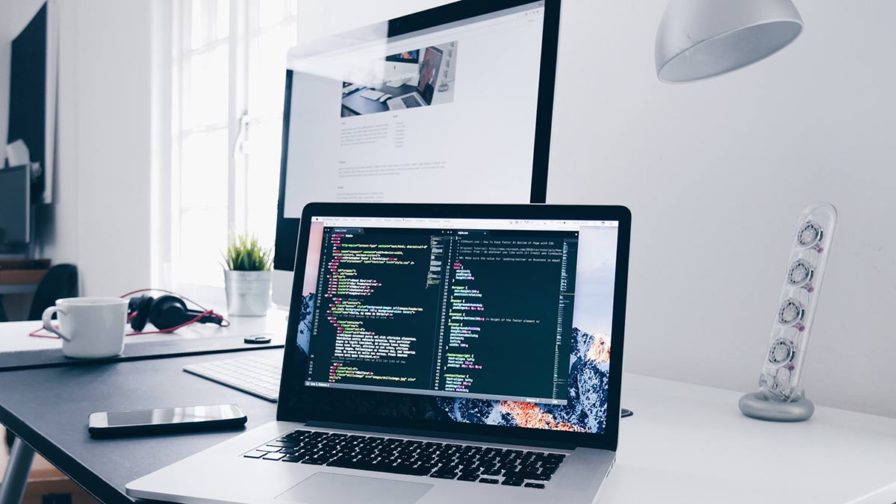How to Properly Incorporate Visual Appeals and Functionality in Website Design
When creating an internet site, you require to strike a balance between aesthetics and capability. It's not almost looking excellent; your style must likewise offer a function and overview users effectively. By concentrating on simpleness and user-friendly navigating, you can produce an interesting experience. However what components truly boost use while maintaining aesthetic charm? Allow's discover the key principles that can bring about a harmonious blend of elegance and feature.
Recognizing the Importance of Aesthetics and Performance
When you create a website, comprehending the equilibrium between looks and performance is crucial for creating an efficient user experience. An aesthetically appealing website grabs focus, but it's the performance that maintains customers involved. If your site looks terrific however is tough to browse, site visitors will promptly lose interest and leave.Consider your target market and what attracts them in. You want to create a style that mirrors your brand name while making sure convenience of use. Streamlined designs, intuitive navigating, and clear phone call to action can enhance both visual appeals and capability.

Concepts of Reliable Website Design
To develop an effective web layout, you require to stick to several crucial concepts that improve both customer experience and aesthetic appeal. Prioritize simplicity; a clean layout assists customers browse conveniently. Use a regular color design and typography to preserve coherence across your website. This fosters familiarity and trust.Next, assure your layout is receptive. Customers access websites on different tools, so your layout must adjust perfectly. Pay focus to aesthetic pecking order; highlight essential elements with positioning, size, or color to direct users' focus.Finally, integrate ample white room. It stops mess and makes material a lot more digestible. Keep in mind, efficient web style balances visual appeals and performance, so every layout option should serve an objective. By adhering to these concepts, you'll develop a website that's not only aesthetically enticing but likewise easy to use, ultimately maintaining site visitors engaged and urging them to return.
Prioritizing User Experience
When prioritizing individual experience, you'll intend to begin by understanding what your users absolutely require. Streamlining navigation style can make a significant distinction in exactly how conveniently they discover what they're looking for. Additionally, improving aesthetic pecking order assists assist their focus to one of the most essential components on your website.
Understanding Customer Requirements
Comprehending customer requirements is important for developing an engaging internet experience that maintains site visitors returning. To achieve this, you should recognize the goals and choices of your target market. Beginning by conducting individual study, like meetings or surveys, to collect insights on what individuals value most. When interacting with comparable sites, pay attention to their discomfort points and challenges. This info allows you to customize your layout, making sure functionality straightens with customer expectations. Furthermore, take into consideration creating user characters that represent different sections of your audience, assisting you imagine their requirements throughout the style process. When you focus on comprehending individual demands, you create an internet site that not just looks excellent however likewise supplies a smooth, satisfying experience that promotes loyalty.
Simplifying Navigating Style

Enhancing Visual Hierarchy
A strong aesthetic power structure is necessary in directing users via your site and ensuring they involve with vital content. To achieve this, utilize shade, size, and spacing tactically. Make vital aspects like headings larger and bolder than body text, drawing focus promptly. Make use of contrasting colors to highlight contact us to activity, encouraging clicks. Additionally, utilize adequate white area to separate areas, making content digestible and inviting.Consider the flow of information; set up elements practically, leading users' eyes from one indicate the next. Use aesthetic signs, like arrows or lines, to route attention. By focusing on aesthetic power structure, you boost user experience and raise the probability of conversions, ensuring your website is both cosmetically pleasing and functionally efficient.
Color Theory and Its Influence On Usability
While choosing the best colors for your website may look like a small detail, it greatly influences functionality and individual experience. Color affects how users view information and can improve or hinder navigation. For circumstances, contrasting colors can help important elements stand out, making it simpler for site visitors to locate what they need.Additionally, consider the psychology of colors: blue usually motivates depend on, while red develops necessity. Understanding your target market read more can guide your shade choices, guaranteeing they resonate well.Moreover, constant color schemes help construct brand identity, making your website more remarkable. Be cautious-- too numerous shades can overwhelm customers. Adhere to a limited scheme that complements your material and keeps clarity.Incorporating ease of access is likewise necessary; verify your shade mixes are friendly for those with aesthetic impairments. By attentively using shade theory, you'll boost use and produce a more interesting customer experience.
Typography: Balancing Design and Readability
Color choices set the phase for your website, yet typography plays an equally necessary role in boosting user experience. You desire your text to connect plainly while additionally showing your brand's character. Begin by picking typefaces that are not only eye-catching but additionally legible. Sans-serif fonts typically function well for digital displays, as they're less complicated to read at numerous sizes.Maintain a power structure by using various font style dimensions and weights; this overviews users via your content effortlessly. Take into consideration line spacing and letter spacing; as well tight can annoy readers, while as well loosened can disrupt the flow. Limit your font options to two or three to maintain the style cohesive.Finally, constantly check your typography across different devices and browsers. What looks excellent on one display may out an additional. Balancing design with readability warranties that your message resonates, keeping your target market involved and educated.
Responsive Layout: Making Aesthetics Work With All Gadgets
To ensure your web site looks fantastic on any type of gadget, you'll require to welcome responsive layout principles. This method guarantees your site adapts to numerous display sizes, supplying a suitable user experience. Beginning by utilizing fluid grids and adaptable images that scale effortlessly. As opposed to repaired dimensions, go with percents and family member devices, enabling your design to change dynamically.Next, execute media inquiries in your CSS. These allow you use different designs based upon device features, like screen width. In this manner, you can maintain visual charm while guaranteeing functionality.Don' t forget touch targets; make sure buttons and links are simple to touch on smaller screens. Focus on essential web content, so customers can easily browse your website despite their device. By concentrating on these aspects, you'll develop an appealing, aesthetically appealing experience that satisfies the needs of all customers, whether they get on a desktop, smartphone, or tablet .
Conducting Usability Screening for Constant Enhancement
To enhance your website design, you require to establish clear usability goals that straighten with customer demands. By conducting customer examinations, you can gather valuable comments on exactly how actual individuals communicate with your site. Assessing these outcomes will help you make informed enhancements and create a more efficient individual experience.
Specifying Functionality Goals
While aesthetics can draw customers in, specifying functionality objectives is important for ensuring their experience continues to be seamless and rewarding. Begin by determining what you desire users to achieve on your site (website design london Ontario). Consider their needs, jobs, and behaviors. Are they looking for details, purchasing, or enrolling in a newsletter? Develop clear criteria to determine success, like task conclusion rates or time on job. Prioritize instinctive navigation, obtainable web content, and responsive design to enhance usability. On a regular basis review these goals as user assumptions advance. By defining use goals, you create a structure for evaluating and boosting your website's efficiency. This concentrate on functionality not only enhances individual fulfillment but likewise reinforces the total efficiency of your layout
Conducting User Examinations
Performing customer examinations is vital for improving your website and guaranteeing it meets your target market's needs. Start by determining your target individuals and producing an examination plan that outlines your goals. Use a mix of measurable and qualitative approaches, such as surveys, interviews, and task-based observations, to gather extensive responses. Invite individuals to navigate your website while you observe their interactions and note any troubles they run into. Urge open discussion to record their ideas and feelings regarding the design and functionality. Maintain sessions brief and focused, guaranteeing you cover essential locations without overwhelming customers. Make sure to record all findings, as this information will certainly be very useful for making informed style choices that enhance both visual appeals and usability.
Evaluating Test Outcomes
Just how can you successfully evaluate the results of your usability tests to drive continual improvement? Beginning by categorizing responses into usual themes. Look for patterns in individual habits that highlight discomfort points or locations for enhancement. Usage measurable data, like task conclusion rates and time on job, to measure use fairly. Do not forget to consider qualitative insights from individual remarks; they commonly reveal underlying issues that numbers can not reveal. Prioritize one of the most impactful searchings for and develop workable products for your style team. Bear in mind, it has to do with iterating-- execute modifications, then examination once more. This cycle of testing, examining, and refining assists you equilibrium aesthetics and functionality, guaranteeing your site meets customer demands efficiently while preserving aesthetic appeal.
Frequently Asked Concerns
Exactly how Do I Pick the Right Shade Combination for My Website?
To choose the right shade palette for your internet site, consider your brand name's personality, target audience, and emotional influence (website design london Ontario). Usage shade psychology, create harmony, and warranty readability. Test combinations to see what resonates ideal with visitors
What Devices Can Aid With Web Design Aesthetics and Capability?
You can utilize devices like Adobe XD, Figma, and Map out to boost your web layout's aesthetics and capability. These platforms use instinctive interfaces, collaboration features, and pre-made layouts to streamline your innovative process and improve your designs.
Exactly How Can I Integrate Animations Without Compromising Performance?
To incorporate computer animations without jeopardizing functionality, focus on subtle impacts that boost individual experience. Use CSS computer animations for smoother communications, guarantee quick load times, and test on numerous tools to keep efficiency while including aesthetic allure.
What Prevail Errors to Avoid in Internet Design Aesthetic Appeals?
When creating, stay clear of chaotic designs, inadequate shade options, and irregular typefaces. Don't forget mobile responsiveness, as it can alienate users. Confirm your style straightens with your brand name, creating a seamless experience that involves site visitors properly.
Exactly how Typically Should I Update My Internet site's Layout for Ideal Visual Appeals?
You ought to upgrade your web site's style every 1-2 years to stay on top of patterns and preserve optimal appearances. Routinely renewing visuals helps engage visitors and assurances your site continues to be enticing and easy to use. When you make a web site, comprehending the balance between appearances and functionality is necessary for creating a reliable user experience. To create an effective internet layout, you require to stick to a number of vital principles that boost both user experience and visual charm. Users access web sites on different devices, so your design ought to adjust perfectly. When focusing on user experience, you'll want to start by comprehending what your users really require. Start by performing customer research study, like surveys or interviews, to gather understandings on what users worth most.